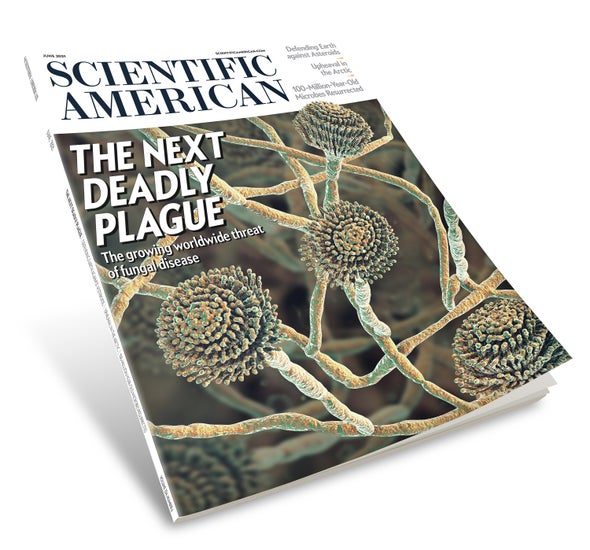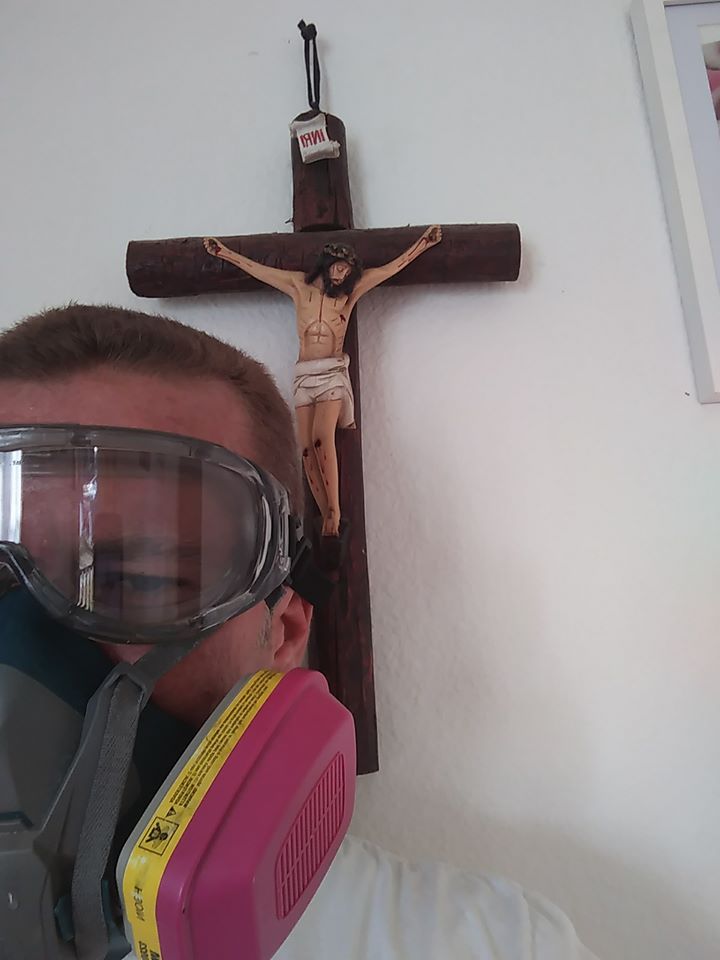“Killer viruses and antibiotic-resistant bacteria aren’t the only infectious threats we face – deadly fungi are coming for us too,” warns Nic Fleming

A U.S. Centers for Disease Control and Prevention (CDC) physician and an epidemiologist, Tom Chiller, has been working in the effort against COVID is warning Americans of a new potential pandemic that is said to be much worse than COVID and some states have gone on high alert, according to the Scientific American.
This new global threats are molds/fungi like Aspergillus and Candida auris which the CDC says resembles the Black Plague.
Fungal microbes that are coinfecting COVID patients and are much more deadly than the virus.
“We have an enormous blind spot,” says Arturo Casadevall, a physician and molecular microbiologist at the Johns Hopkins Bloomberg School of Public Health.
“Walk into the street and ask people what are they afraid of, and they’ll tell you they’re afraid of bacteria, they’re afraid of viruses, but they don’t fear dying of fungi.”
Attempting to find solutions to this new threat, Chiller consulted with his peers in other countries where the fungus invaded their healthcare systems, causing fast-spreading outbreaks that killed up to two-thirds of the people who contracted it. The problem was that no drug and cleaning agents seemed to work at killing the fungus, and once it contaminated the hospitals and equipment, they had to rip it out and take it to the dump.
Some experts compare these fungal infections to the “creature from the black lagoon and the new Black Plague.
An epidemiologist from Imperial College, London – Johanna Rhodes, said that the fungus could survive on surfaces for long periods. “One of the things that make Candida Auris so scary is the fact it can linger on inanimate surfaces for long periods and withstand whatever you throw at it,” Rhodes said.
Rhodes was one of the scientists involved in containing a fungus outbreak in the UK in 2016. The fungus was compared to the Black Plague only after a CDC doctor found that the fungal makeup resembled substances that are found in lagoons, and other areas brimming with bacteria.
“It is a creature from the black lagoon. It bubbled up and now it is everywhere,” Dr. Tom Chiller said.
The Scientific American reports;
Accounts of infections trickled back from India, Italy, Colombia, Germany, Austria, Belgium, Ireland, the Netherlands, and France. Now the same deadly fungi were surfacing in American patients as well: the first signs of a second epidemic layered on top of the viral pandemic.
And it wasn’t just C. auris.
Another deadly fungus called Aspergillus was starting to take a toll as well.
“This is going to be widespread everywhere,” Chiller says. “We don’t think we’re going to be able to contain this.”
Warning networks that link infectious disease doctors and mycologists around the globe lit up with accounts of aspergillosis taking down patients afflicted with COVID: in China, France, Belgium, Germany, the Netherlands, Austria, Ireland, Italy, and Iran. As challenging a complication as C. auris was, Aspergillus was worse. C. auris lurks in hospitals.
The place where patients were exposed to Aspergillus was, well, everywhere. There was no way to eliminate the spores from the environment or keep people from breathing them in.
In Baltimore, physician Kieren Marr was acutely aware of the danger. Marr is a professor of medicine and oncology at Johns Hopkins Medical Center and directs its unit on transplant and oncology infectious diseases. The infections that take hold in people who have received a new organ or gotten a bone marrow transplant are familiar territory for her.
When COVID arrived, she was concerned that Aspergillus would surge—and that US hospitals, not alert to the threat, would miss it. Johns Hopkins began testing COVID patients in its ICU with the kind of molecular diagnostic tests used in Europe, trying to catch up to the infection in time to try to treat it. Across the five hospitals the Johns Hopkins system operates, it was found that one out of 10 people with severe COVID was developing aspergillosis.
Several patients died, including one whose aspergillosis went to the brain. Marr feared there were many others like that patient across the country, whose illness was not being detected in time.
“This is bad,” Marr said this spring.
“Aspergillus is more important in COVID right now than C. auris. Without a doubt.”
The CDC estimates that 300 million people are infected globally with fungal diseases and 1.6 million deaths every year—more than malaria, as many as tuberculosis. Estimates in the US are approximately 75,000 people are hospitalized annually for a fungal infection, and another 8.9 million people seek an outpatient visit, costing about $7.2 billion a year.
“The past five years really felt like we were waking up to a whole new phenomenon, a fungal world that we just weren’t used to,” Chiller says. “How do we stay on top of that? How do we question ourselves to look for what might come next?
We study these emergences not as an academic exercise but because they show us what might be coming. We need to be prepared for more surprises.”

Moe is the founder of GnosticWarrior.com. He is a father, husband, author, martial arts black belt, and an expert in Gnosticism, the occult, and esotericism.









Scary stuff !!!!
Allow me to express what I know. September 2021. Aspergillus is a wheat fungus on our daily bread. Round-up is the weed killer used in traditional agriculture to cure wheat for harvesting. Round-up promotes the groth of Aspergillus. Add yeast and sugar and a body tempriture of around 32degrees and you create a perfect environment for fungus to thrive in any living organisms consuming wheat or corn grain. World wide. Yes new World wide pandemic.
As an organic grower I know Epson Salt works most effective against fungus growth. Yogurt with live culture for balancing gut microbes. Kombucha with live culture is most effective.
Billy Boy Goat has invested large financial expense in grain farm land in US and other countries supplying GMO grain seed and Round-up herbeside to manage our daily bread intake.
Knowledge is power.
Ignorance is bliss.
Act today in Unity.